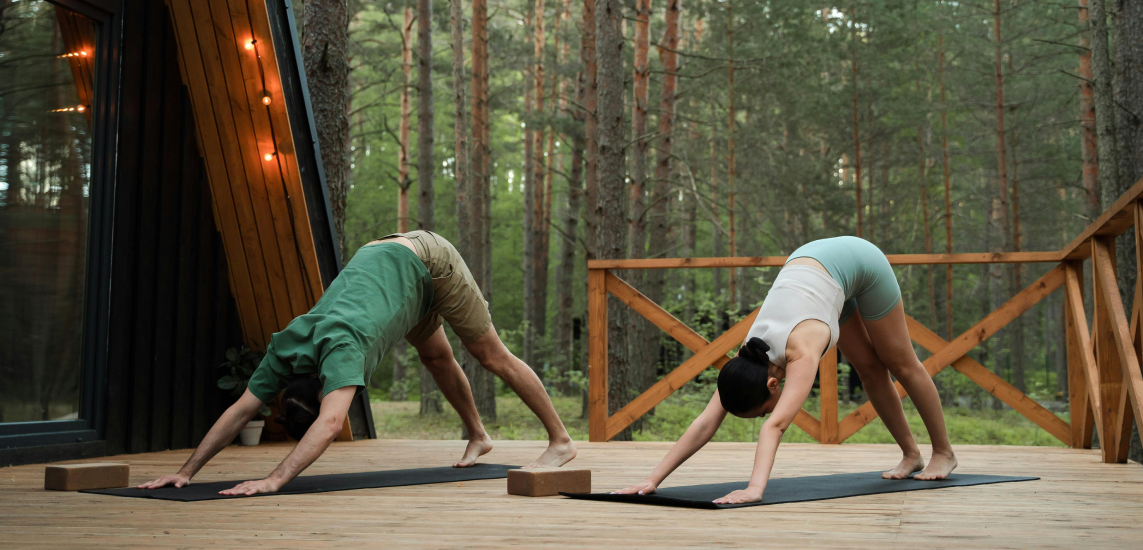Stress can feel inescapable in modern life. But there are ways to instantly calm your mind and lower your cortisol levels. The voo breathing method is a simple technique that can help you feel safe, reduce inflammation, regulate your heart rate, and support your digestion.
In this blog post, you’ll discover how the voo breathing method, designed by Dr. Peter Levine, can help you achieve these benefits. By the end of this article, you’ll be equipped with a powerful tool to enhance your overall well-being.
Join Rebecca Ward, a renowned meditation guide on Insight Timer, as she leads you through the voo breathing method, helping you to achieve a sense of calm and balance.
A 17-minute meditation to regulate your nervous syste
A 17-minute guided meditation practice focusing on regulating the nervous system so you can feel calmer, more connected, and creative.
For more guided meditations, explore the largest library of free guided meditations.
Voo breathing method guided meditation script:
Step 1: Find a comfortable seat
Begin by finding a comfortable place to be seated upright. Ensure you have support behind you and beneath you. Close your eyes and bring your awareness to the places in your body that I refer to during the meditation.
Step 2: Understand your nervous system
Inside our bodies, our nervous systems guide us to stay safe. Often, the nervous system has difficulty distinguishing between real and perceived threats, such as a stressful conversation with a boss or partner. We need to teach it how to make this distinction so that we can feel open, creative, and connected when we’re safe.
Step 3: Visualize the vagus nerve
The vagus nerve begins at the brainstem and travels to the throat, lungs, heart, spleen, liver, stomach, pancreas, kidneys, and intestines. It regulates critical functions and supports relaxation.
Step 4: Prepare for breathing
Place one hand on your heart space, just to the right of your heart, in the center of your chest. Place the other hand on your belly. Feel the support behind you and beneath you.
Step 5: Start with deep breaths
Breathe in through your nose with a long, deep breath, and out through your mouth. Continue this pattern at your own pace. Ensure there is space between your top and bottom teeth, and your jaw is relaxed with your tongue resting in your lower palate.
Step 6: Introduce the “voo” sound
Make the voo sound on the out breath, vibrating the entire vagus nerve from the brainstem down to your digestive tract. Listen to the first practice round and then we’ll do five together.
Step 7: Practice the voo sound
Breathing in, make the Voo sound on the out breath. Follow this with two gentle breaths. Repeat this process five times. Here’s how:
- First voo: Breathe in, and on the out breath, make the voo sound.
- Take two gentle breaths.
- Second voo: Breathe in, and on the out breath, make the voo sound.
- Take two gentle breaths.
- Repeat for a total of five voo breaths.
Step 8: Reinforce safety
To reinforce safety, use your higher-order brain to communicate this back to your nervous system using language. On the next out breath, repeat the words “I am safe” out loud. Cascading these reassuring words all the way down into your belly.
Step 9: Reflect on sensations
Notice what feels different in your body. Do you feel more spacious, calm, or energized? Reflect on whether this practice energizes or relaxes you. If you feel energized, try this practice in the morning. If relaxed, try it at bedtime.
This guided meditation script was adapted from Rebecca Ward’s Voo Breathing Method, which you can find here.
Take a moment to reflect
After the meditation, take a few moments to reflect on your experience. Journaling can help you understand your thoughts and feelings and track your progress over time. Here are some questions to guide your reflection:
- How did you feel before and after the meditation?
- Did you notice any changes in your body, such as a release of tension or a feeling of calm?
- What thoughts or emotions came up during the practice?
- How can you incorporate this practice into your daily routine for ongoing benefits?
Achieve calm and balance with Insight Timer’s free meditation app
For more tools and resources toward a more peaceful and mindful life, download Insight Timer’s free meditation app. Here you’ll find a wealth of guided meditations, including more breathwork practices to include in your practice.







